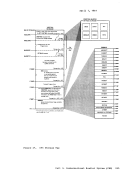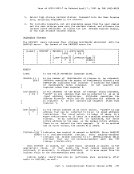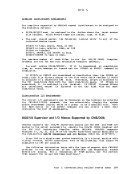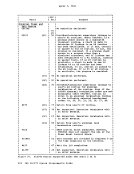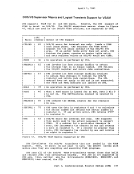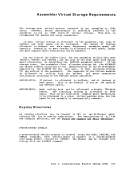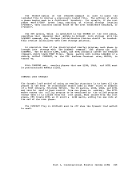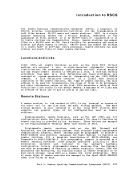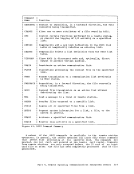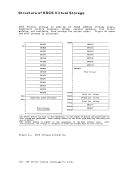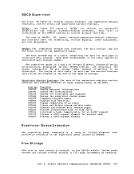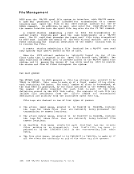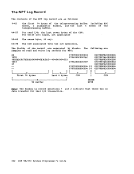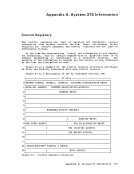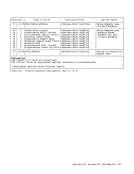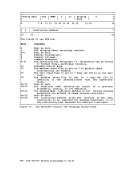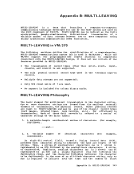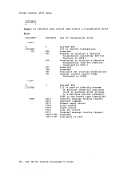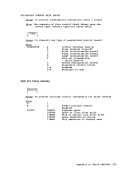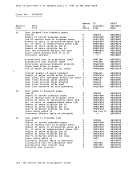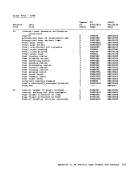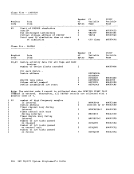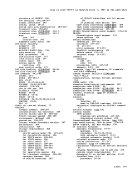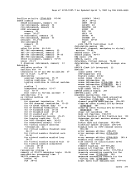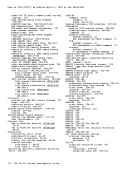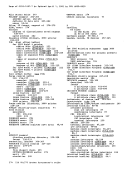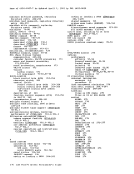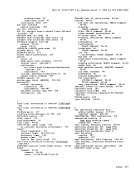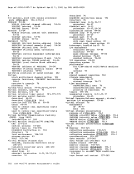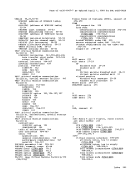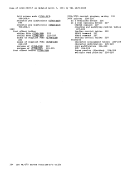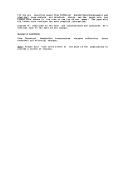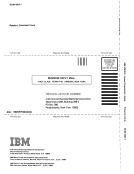April 1, 1981 DIAGNOSE Code X'OO' -- Store Extended-Identification Code
Execution of DIAGNOSE codeX'OO' allows a virtual machine to examine the VM/370 extended-identification code. For example, an as/VS1 virtual
machine issues a DIAGNOSE codeX'OO' instruction to determine if the
version ofVM/370 under which it is executing supports the VM/VS Handshakinq feature. If the extended-identification code is returned to VS1, VM/370 supports handshaking; otherwise, it does not.
The register specified as Rx contains the doubleword aligned virtual
storaqe address where theVM/370 extended-identification code is to be
stored. The Ry register contains the number of bytes to be stored
entered as an unsiqned binary number.
If theVM/370 system currently executing does not suooort the
DIAGNOSE code- x'OO' instruction, no data is returned to the virtual
machine. If it does support theDIAGNOSE code X'OO' instruction, the
following data is returned to the virtual machine (at the location
specified by RX):
Name
version
NumberVersion Code
MCELProcessor Address User id Program Product
Bit Map
The first byte is the
version number, the second
byte is the level, and the thirdbyte is the PLC (Proqram Level
Chanqe) number.VM/370 executes the STIDP (Store Processor ID) instruction
to determine the version
code.VM/370 executes the STIDP instruction to determine
the maximum length of theMCEL (Machine Check Extended
Logout) area.VM/370 executes the STAP (Store Processor Address)
instruction to determine the
processor address.
The userid of the virtual
machine issuing the DIAGNOSE.
Bits that indicate the
Proqram Products that
are installed.
Characteristics
8bytes;-EBCDIC 3 bytes, hexadecimal
1 byte, hexadecimal
2 bytes, hexadecimal
2 bytes, hexadecimal
8 bytes,EBCDIC 8 bytes, hexadecimal
(Reserved forIBM use)
IfVM/370 is executinq in a virtual machine, another 24 bytes, or
less, of extended identification data is appended to the first 24 bytes
described above.Up to five nested levels of VM/370 virtual machines are sup-ported b-y·--th-is diaqno-se- inst-ru€tion result in-g in a max-i-m--u-m- of -1-6-0- bytes of data that can be returned to the virtual machine that initially
issued the DIAGNOSE instruction.Upon return, Ry contains its original value less the number of bytes
thatwere stored. Part 2. Control Proqram (CP) 183
Execution of DIAGNOSE code
machine issues a DIAGNOSE code
version of
The register specified as Rx contains the doubleword aligned virtual
storaqe address where the
stored. The Ry register contains the number of bytes to be stored
entered as an unsiqned binary number.
If the
DIAGNOSE code
machine. If it does support the
following data is returned to the virtual machine (at the location
specified by RX):
Name
version
Number
MCEL
Bit Map
The first byte is the
version number, the second
byte is the level, and the third
Chanqe) number.
to determine the version
code.
the maximum length of the
Logout) area.
instruction to determine the
processor address.
The userid of the virtual
machine issuing the DIAGNOSE.
Bits that indicate the
Proqram Products that
are installed.
Characteristics
8
1 byte, hexadecimal
2 bytes, hexadecimal
2 bytes, hexadecimal
8 bytes,
(Reserved for
If
less, of extended identification data is appended to the first 24 bytes
described above.
issued the DIAGNOSE instruction.
that

























































































































































































































































































